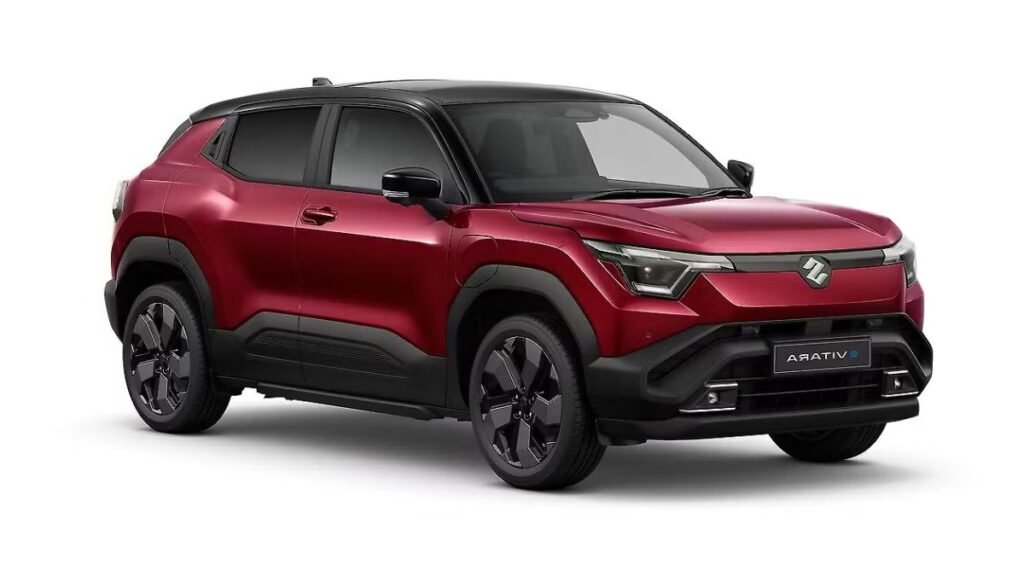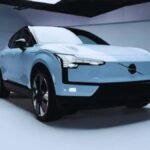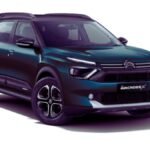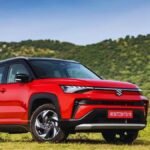I want to tell you about a new car coming soon: the Maruti Suzuki e-Vitara. This is Maruti’s first big electric SUV for India. After seeing a lot of news, pictures, specs, I feel excited — and also curious how it will match what people really need. Here’s what I think, and what the car offers.
What is the Maruti Suzuki e-Vitara
- It is an electric SUV. That means no petrol or diesel engine, it runs on batteries.
- It will be produced at Maruti Suzuki e-Vitara factory in Hansalpur, Gujarat.
- The car is expected to launch in India around March 2026.
- Estimated ex-showroom price: Rs. 20.00 to 25.00 lakh.
So, it’s not cheap, but for a big SUV and an EV, this seems in the “premium” but not ultra-luxury section.
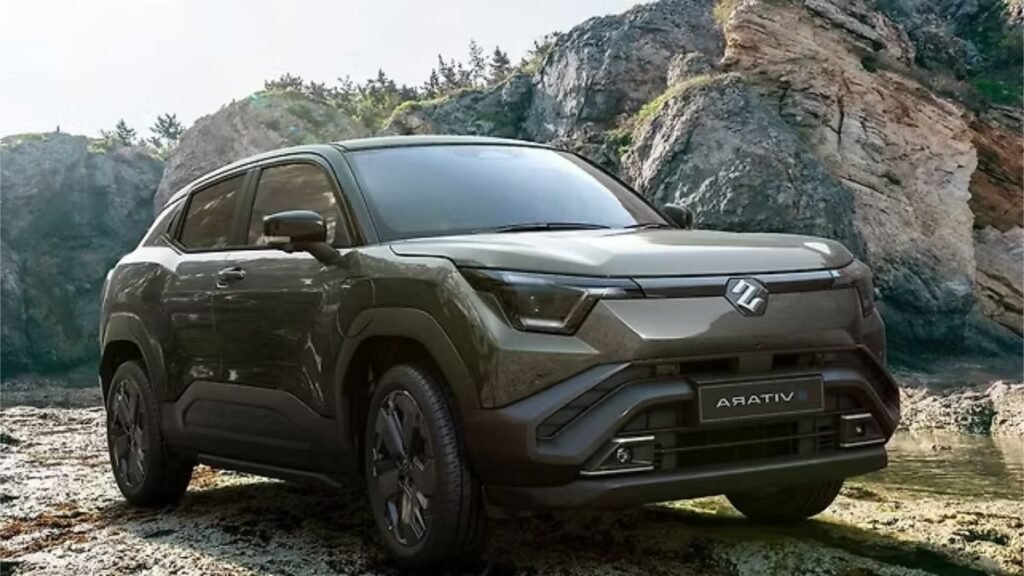
Key Specs & Variants
Here are the main features and variants, what we know so far:
Other important numbers:
- Motor power: For the smaller battery, ~142 bhp with torque ~192.5 Nm.
- For the larger battery, power goes up to ~172 bhp.
- The 0-100 km/h time is about 8.9 seconds for the bigger battery.
Looks and Feel (Exterior & Interior)
What I like:
- The design is “boxy”-SUV style. Not curvy like small hatchbacks. That gives more road presence.
- LED headlights, big Suzuki logo upfront.
- Wheels: base versions may have 18-inch wheels, top trims get 19-inch with aero elements (for better efficiency)
- At rear, connected taillamps and a large “e-Vitara” badge. Looks modern.
Inside:
- Large touchscreen infotainment. Digital instrument cluster.
- Electrically adjustable front seats. Glossy-black panels. Floating centre console.
- Top versions will get goodies like Level 2 ADAS (advanced driver assistance), sunroof, etc.
Safety & Other Features
Safety seems taken seriously:
- Six to eight airbags (depending on variant)
- ABS with EBD, ESP (electronic stability), ISOFIX child seat mounts.
- Some modern driver-assist tech (on higher trims).
Also:
- Features like V2L, V2X (which I understand help with external power supply / communication) in top trims.
- Fast charging: the larger battery can be charged with a “C-fast charger” (70 kW) to some extent in about 50 minutes.
What’s Good & What Could Be Better (My View)
From what I understand so far, here are things I like and some concerns, from the perspective of an everyday person:
What I Like
- Range: 500 km is very good. That can cover long trips between cities, especially if roads and charging infrastructure are okay.
- Brand trust: Maruti Suzuki e-Vitara is a name people know in India. Service, parts, reliability are big pluses. Knowing they’re launching this indicates they believe in EV growth here.
- Features: It’s not just about battery and motor. The interior looks modern, safety features are good. For many buyers, comfort, feature set, looks matter as much as power.
- Stylish SUV appearance: People like SUVs in India. Big road presence, higher sitting position, more space. If Maruti Suzuki e-Vitara delivers on comfort, it will attract families
Read Also :- TVS RTX 300 2025 – The New Indian Sports Bike with Racing DNA
What Could Be Better / Concerns
- Price: 20-25 lakh is not small money. For many middle-class buyers, it may be out of reach, unless there are subsidies, or used-EV market support. This could limit how many people buy it initially.
- Charging infrastructure: Even with good range, if fast chargers aren’t well-spread out (especially in smaller towns, highways), then long trips may be stressful. Need more charging stations.
- Service, parts for EVs: Maruti has big network for petrol/diesel cars. But for EVs, maintenance, battery servicing, etc. are newer areas. Will they do well here? Time will tell.
- Competition: There are other EVs coming / already present: Tata, Hyundai, etc. The Maruti Suzuki e-Vitara has to compete not just on range / features, but on value (price vs what you get).
- Weight, efficiency in real life: Claimed range (500 km) may drop a lot in city use, A/C on, traffic, heavy load. Many people will find real-world numbers lower.
Who It’s For
In my opinion, this car is best suited for people who:
- Travel between cities sometimes (weekends, holidays) and want a good EV option.
- Prefer SUV style, more space — families, people with luggage.
- Say, middle to upper-middle income, who are ready to spend more for better features and brand trust.
- Living in or near metro cities or towns which have decent charging infrastructure (so they don’t worry about charging or breaking down).
If someone lives in a remote place without good EV support, it might be risky.
Overall Thoughts & Rating
If I had to rate it, I’d give 8 out of 10 (in the Indian EV SUV category) based on what I know now. Why 8:
- Because it checks many boxes: decent range, modern styling, safety, good battery options.
- Misses a bit where price and infrastructure are concerned.
If the price comes down a little (or good incentives from the government), and if Maruti builds charging/servicing well, then it could be a very popular EV in India.
What to Keep an Eye On
Before buying, or even deciding if this is “good value,” I’d watch for:
- Actual user reviews once it is used on Indian roads. Especially for battery performance, ride comfort, heating or cooling in summer, etc.
- Charging network: how many fast chargers in your city or on your regular travel routes.
- Maintenance costs: battery warranty, parts, electric motor issues, software updates, etc.
- Resale value: since EVs are new, sometimes resale value is uncertain.
- Government policies / subsidies: State governments may give incentives which bring down cost. Also electricity rates, charging norms, tax benefits matter a lot.
Conclusion For Maruti Suzuki e-Vitara
To sum up, the Maruti Suzuki e-Vitara looks promising. It feels like Maruti is serious about EVs, not just testing waters. For people wanting to move from petrol/diesel to electric, but who want comfort, features, good range, the Maruti Suzuki e-Vitara may be a solid choice.
But it won’t be perfect for everyone immediately — price and infrastructure are big hurdles. If you are someone who uses car a lot, travels long distances, and want a reliable SUV with modern features, you might wait for this, see real-world feedback, then buy.

